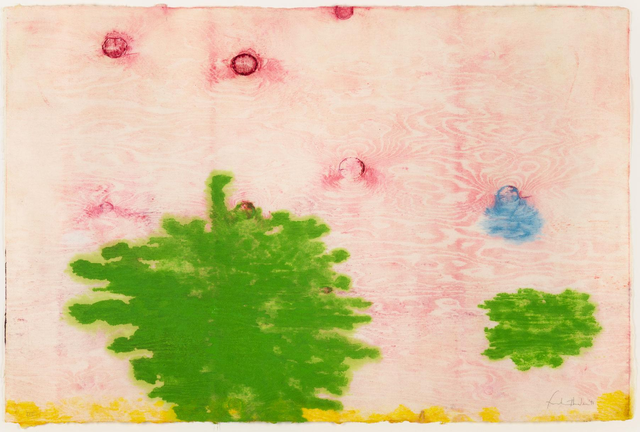Helen Frankenthaler
Helen Frankenthaler, an American abstract expressionist painter, was a pivotal figure in the evolution of the Color Field technique. This style of American abstract painting is characterized by vast expanses of unmodulated color that dominate the canvas.
Biography of Helen Frankenthaler
Helen Frankenthaler, born in 1928 in New York City, USA, began her artistic journey at the Dalton School under muralist Rufino Tamayo and later continued her studies at Bennington College in Vermont, mentored by Paul Feeley. Following her graduation in 1949, she pursued private studies with Australian-born painter Wallace Harrison and Hans Hofmann in 1950.
In 1952, Frankenthaler's artistic career took flight with her exhibition titled "Mountains and Sea." This marked the beginning of her significant contributions to the art world.
In 1958, she married painter Robert Motherwell, but they divorced in 1971. Throughout her life, Frankenthaler remained engaged with the arts, serving on the National Council on the Arts of the National Endowment for the Arts from 1985 to 1992.
In 1994, she married Stephen M. DuBrul, Jr., an investment banker. Frankenthaler continued to create and inspire until her passing in 2011 at her home in Darien, Connecticut.
Helen Frankenthaler's Art Style
Initially associated with abstract expressionism, Frankenthaler's art style is renowned for fluid shapes, abstract masses, and lyrical gestures.
Her official artistic career was launched in 1952 with the exhibition of "Mountains and Sea." Subsequently, in 1957, Frankenthaler began experimenting with linear shapes and organic, sun-like rounded forms. By the 1960s, her style evolved towards symmetrical compositions, incorporating strips of color near the edges of her paintings.
The term "color field painting" was coined in 1960 to describe Frankenthaler's work, referring to the application of large areas, or fields, of color onto the canvas. In the 1970s, she moved away from her soak stain technique, opting for thicker paint that allowed for vibrant colors reminiscent of Fauvism. During this period, she explored the fusion of canvas areas using modulated hues and experimented with large, abstract forms.
In 1976, Frankenthaler expanded her artistic repertoire by delving into woodcuts. Over the next three decades, she ventured into painting, silkscreen prints, and woodcuts, shaping the contemporary directions of these mediums with each artwork.
Years:
Born in 1928
Country:
United States of America
Gallery:

